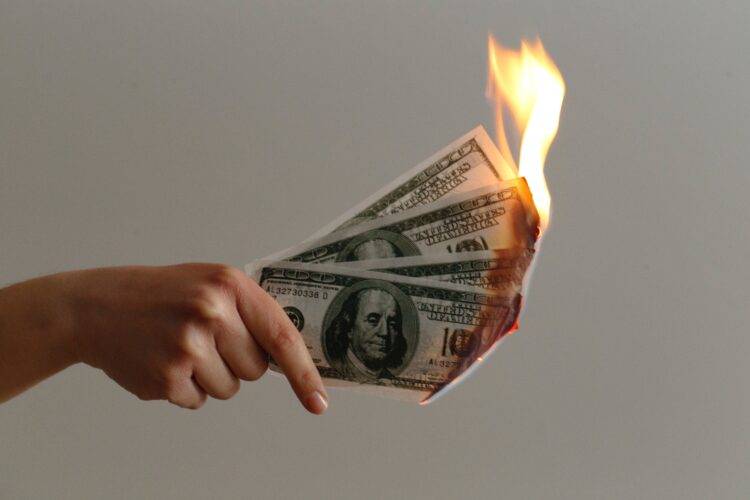
Many people would be better off financially if they didn’t save so much.
Wait, what?
You read that correctly. But I’m not talking about the real savings that pays off debt, builds financial security, and purchases smart investments.
I’m talking about the pseudo-savings that is the bread-and-butter of advertisers and retailers, that keeps shoppers on the consumer hamster wheel instead of truly saving money and getting ahead.
If you’re spending money that you don’t have, you’re not saving money. If you’re spending money that you have on things that you don’t need, you’re not saving money.
Real saving happens when you spend less than you planned on things that make your life better, and you re-purpose the extra money toward improving your financial situation even more. Here are five ways that pretend saving can hold you back from saving money for real.
1. You’re Saving Imaginary Money
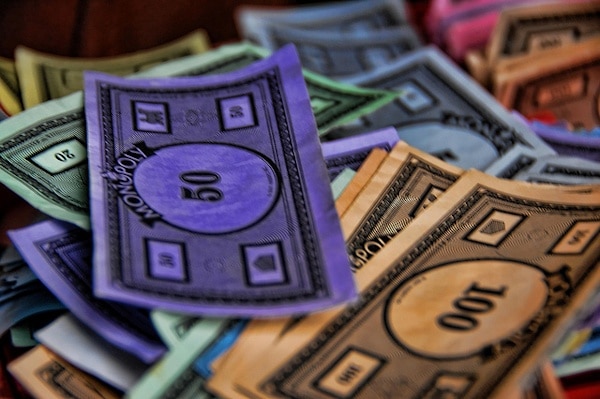
Do the math: If I have $15,000 to spend on a new car, and I choose a $14,000 economy car instead of a $100,000 luxury car, how much have I saved?
Answer: $1,000.00
As Paula Pant wrote at her blog Afford Anything, you’re not saving $128 million by not buying a Picasso painting: “You’re only saving money if you legitimately would have made a purchase, but refrained from doing so.”
Of course these examples are obvious. None of us are going to brag that we saved a huge amount of money by not purchasing a luxury vehicle or a famous painting that we couldn’t have afforded anyway. Yet it happens all the time on a smaller scale, and advertisers count on us getting excited about saving imaginary money.
For example, I budget $100 per week for groceries. The receipt from my most recent shopping trip proclaims that I saved $33.05 with the store loyalty card, and $13.44 with coupons, for a total of $46.49 in savings. But I spent $98.92. While I’m always happy to come in under budget, my real savings was only $1.08.
It’s great to know how to take advantage of sales and use coupons, but I have already factored those savings into my budget and purchasing decisions. I wouldn’t have purchased three boxes of cereal if they hadn’t been buy 2 get 1 free. I would have chosen the store brand eggs instead of Eggland’s Best if I hadn’t had a coupon. I’m only saving money when I buy something I absolutely needed for less than I planned, and then put the extra in the bank.
I’ve written before about retailers using ludicrous inflated Manufacturer’s Suggested Retail Prices to advertise huge savings when the item has never sold anywhere for the “original price”. Many of us giggle at hokey infomercials that claim some gizmo is worth $399, but if we order now we can get two for just $19.95 plus shipping and handling! Yet, we let other retailers get away with the very same tactic because they appeal to us in some way.
Money actually saved depends on what you could have, and would have, spent. Yes, it’s hard not to use the term “save” when referring to sale prices and coupons (I’m certainly guilty of it myself), but your main focus should always be on what you’re spending. That’s how my frugal lifestyle blog ended up with spends, not saves, in the title.
Minimizing spending, spending wisely and keeping track of spending are keys to truly saving money and getting ahead.
2. You’re Saving Money in the Future

Do the math: If a KitchenAid mixer costs $125, but I get $20 in store “bucks” to use on a future purchase, plus a $25 mail-in rebate, how much do I need to pay the cashier?
Answer: $125 plus tax
Pretty obvious, right? But I have seen countless blog headlines that scream things like Hurry! Get a KitchenAid Mixer for only $80!!!! Through my affiliate link, by the way. Readers click through to the whole post and discover that really they have to pony up that $125 at the register, but that’s okay because considering the future savings “it’s like paying $80”.
Um, no. It’s exactly like paying $125, and if you don’t have that $125 to spend, you’re not saving a dime. In fact, you’re probably blowing your budget for this month, and savings you can use next month or the month after aren’t going to do much for you today.
Back when I used to post about grocery deals and share my own shopping trips, a reader thanked me for being honest about what I really spent. “I hate it when people subtract future savings from the total,” she said. I hate it, too.
What’s so bad about figuring in future savings? For one thing, they might never happen. Once I earned $10 in Kohl’s Cash and forgot to use it before it expired. A few months ago my husband and I drove over an hour to the nearest outlet center to buy shoes and clothing for our boys. We spent so much that we earned generous discount coupons for a future purchase, but there was no way we’d be making the trip again before the coupons expired. Mail-in rebates may be denied due to a technicality, or I might forget to send them in. Life happens.
Future savings can be a budget-buster for another reason: coupons for future purchases get you into the store to buy more at that store. If you’re really disciplined, you might spend only the amount on the voucher, or use it toward a larger purchase that you really needed to make anyway, but chances are you’ll spend a little bit more. Stores are counting on it — that’s why they hand them out. Maybe you can use a coupon to get something for free, but if it’s not something you needed, you’re not saving money.
It’s mind-boggling to me that “experts” who advocate careful budgeting and swear by the usefulness of cash envelopes also get away with encouraging people to spend in this manner — it’s a surefire way to derail a budget if you’re not careful. The experts know this, but they make a lot of money selling such “deals” to you.
Always look for the lowest out-of-pocket cost for something you planned to buy anyway, treating future savings as an added bonus. And never use coupons just because you have them. Rebates and future purchase coupons aren’t useless, but they won’t help you if you overspend today.
3. You’re Buying Crappy Products

Do the math: If I buy a cheap $10 backpack instead of a $20 backpack that comes with a lifetime guarantee, and it breaks halfway through the school year, how much have I saved?
Answer: Nothing — I’ll need to buy a new one.
I’ve certainly been guilty of buying lower quality products because they’re cheaper. Sometimes I just wanted to spend less, other times I wanted something immediately instead of taking the time to save for the higher quality version. Many, many times I have learned the hard way that it pays to buy the right thing from the start.
When my oldest was a baby and was ready to transition to a convertible car seat from his infant seat, I spent over $200 on a high quality seat. The thing is built like a tank, with a steel frame, and it was made to last 10 years, longer than many car seats on the market.
Now my younger son is ready for a bigger seat. His brother’s seat is still usable, but after 4 years of constant use, the cover was ratty. I called the manufacturer and found that I could purchase a replacement cover for about $25. I could also order new straps if I needed to. I’m paying a small amount to continue using a high quality seat instead of purchasing a new one. If I had purchased a cheaper seat 5 years ago, it would most likely have expired by now.
The old adage “You get what you pay for” is very often true. Buying and repeatedly replacing poor quality products doesn’t save any money. I have a special fondness for products that are built to last and made to be repaired, not replaced.
4. You’re Buying Things You Don’t Need
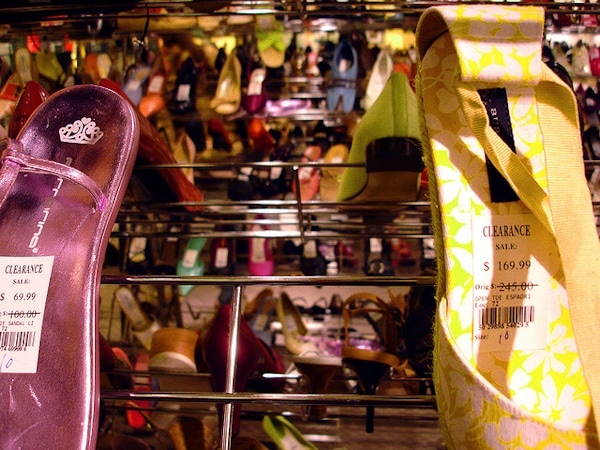
Do the math: If I have $0 to spend on a $300 Coach handbag, and I buy a $300 Coach handbag for $50 on clearance, how much have I saved?
Answer: -$50.
We are constantly inundated with deals on TV, on blogs, through social media, and by email. Advertisers employ frenzied rhetoric like “Hurry!”, “Limited Time Only”, “Don’t Wait”, “Supplies Are Limited” to pressure us into making an impulse buy based on pretend savings instead of real need. Maybe once in a while an unexpected deal matches up with an item you planned to buy anyway; it’s really nice when that happens, but it’s rare.
I have moments of weakness when I’m tempted to spring for an incredible deal just because of the price. When I catch myself pondering who it might make a good gift for, or how many times I might wear it, or if I could maybe convince myself to like that color even though it’s not what I would have picked, I know it’s time to walk away. Sometimes it’s really tough to let a deal go, but it’s tougher to scrounge together more money for needs because I wasted money on wants.
Watching advertising over the years has taught me that “Limited Time Only” is increasingly a lie, anyway. I can’t tell you how many times I’ve received emails advertising some amazing sale that ends Sunday. Then, on Monday, I get another email telling me that, surprise! the sale has been extended, even if just for one day only!!!!! Then there are the retailers who have constant sales and try to make each one sound like the best can’t-miss deal ever.
These sales gimmicks tell me two things: A) the merchandise is way overpriced to begin with and B) I can shop when it makes sense for me, because there will always be a sale coming up.
Don’t fall for the hype. The buyers remorse that comes with an ill-considered impulse buy really stinks, and you’re not saving money if you never had the money to spend in the first place. Even little bargains here and there will add up quickly if you didn’t have the money allocated to spend.
5. You’re Spending More to Save More
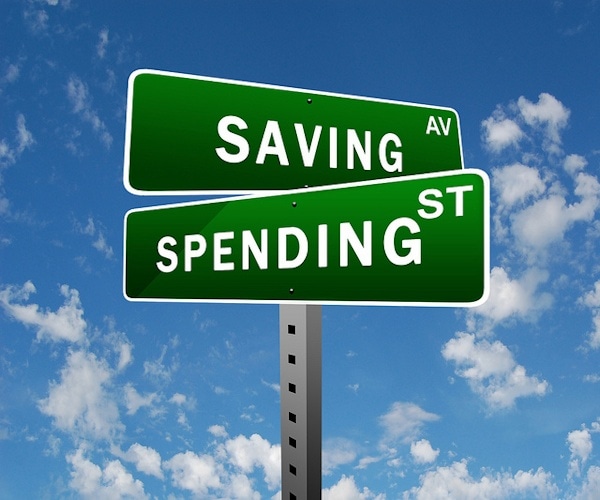
Do the math: I have $50 to spend on a new pair of jeans. The store is running a sale, and if I spend $50, I get 10% off. But if I spend $100, I can get 15% off. I add two shirts to my order to get 15% off everything. How much have I saved?
Answer: -$35. I don’t need the shirts and hadn’t planned to buy them.
“The more you spend, the more you save!” is a popular advertising mantra, and it’s ridiculous. If you’re spending more money than you planned (or worse, spending money you don’t even have), you’re not saving money.
Free shipping promotions are a similar trap. Many retailers have a minimum purchase threshold that activates free shipping. I used to be allergic to paying for shipping until I realized that I was wasting more money than I was saving.
If an item I need costs $10 on a website that has a $50 free shipping threshold, I’m much better off paying the shipping costs (which are certain to be less than $40) than buying other items I hadn’t planned on in order to save a few dollars on shipping.
Of course if I’m very close to the free shipping threshold, it might make more sense to search out a “filler” item that would cost less than the price of shipping. Again, the key is to consider how much you are spending.
How to Save Money for Real
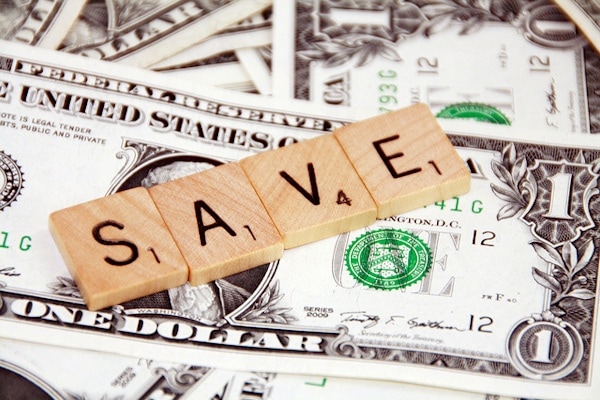
Real savings happen when you spend less than you planned and you repurpose the extra money to satisfy a real need. Here’s how:
1. Budget Budgeting sounds boring, confining, or maybe even scary to a lot of people. It doesn’t have to be any of those things. Budgeting is simply about allocating money for all of your expenses, including needs and wants, before you spend the money. If you want a new handbag, even if you could probably survive without it, fine. Budget it in. A budget is empowering because you know you already have the money for whatever you buy, including a few “wants”. A budget erases guilt and gives you freedom.
2. Research Once you’ve set aside a dollar amount for a purchase, look for sales, coupons or other means to spend even less than you planned. For example, my husband and I had planned to buy a new sofa for $900. We were thrilled when the exact same sofa appeared on Craigslist for $450. Sure, it was two years old, but it was in perfect condition. We spent half of what we expected to pay. Even when I could afford to pay full price for an item, I always double check before I buy to make sure there isn’t a better deal out there.
3. Re-Use When you do score a spending victory and use less money than you expected, re-purpose the extra toward another need. When I come in under budget for groceries, I can use the remaining money to reduce the next week’s spending. If I decide to skip a “want”, I can use the money I would have spent for a need, like paying down debt, building my emergency fund, or investing. Little rewards here and there can be empowering, but avoid the temptation to blow all your extra money on luxuries. Physically moving leftover money to a savings account ensures that it won’t get lost in the shuffle and wasted on frivolity.
Remember, retailers don’t offer discounts out of the kindness of their hearts. They’re counting on you spending more money than you planned. Sales and coupons can be powerful tools, but only if you have the discipline to stick to your budget and spend money that you really have.
Regular people like you and me have become millionaires on relatively modest incomes. It’s not because they pretend save tens of thousands of dollars per year. It’s because they minimize spending, spend wisely when they do need to buy, and re-purpose their left over money in a profitable way. They save money for real.
Photo credits: Monopoly money, counting eggs, broken shoes, clearance shoes, save

Really awesome post! I have been guilty of each of those!
Thank you so much! Yes, I’ve done all of them, too.
Spending more money now to earn rewards points you can use on your next purchase is a suckers deal. The store gets you to spend more actual money in exchange for points or coupons that you might not even use next time around. I’d rather have my cash thank you very much…I can’t pay my mortgage in CVS rewards or Kohl’s cash.
Exactly! Thanks for reading!
I too am guilty of all of these. I feel I am saving 2.00 week by not buying the newspaper and all of the coupons. =)
I’m actually thinking of cancelling my subscription because I don’t use coupons nearly as much as I used to!
This is all so true. If only people realized that shopping with a coupon is not “saving money.” It’s just spending less and you probably would’ve been better off not buying it in the first place.
Thanks, Holly! Yes, spending less, not “saving” is how people need to look at it. It’s rare that a coupon matches up with something that I absolutely need to buy and I can’t compromise on brand.
All great points. But if you have 15K to spend on a car, and you spend 14K, you have saved nothing. You spend $14K.
But your points are very valid.
And I did not buy Trump Tower today, I saved a lot!
I think I see your point. If I’ve saved up $15,000 to pay for a car, you’re right — the $1,000 technically isn’t new money that I didn’t have before. But, since I didn’t spend it like I expected, I can use it for a different purpose.
Thanks for helping me see it from another angle!
Such great food for thought. It opens my mind to thinking more about saving – can I figure out a way to make that actually saved? Can I be more thoughtful about saving “opportunities”? Thanks so much!
Thank you for reading, Lisa! I’m glad you found it helpful.
Fyi, at my local kohls store, they accept expired kohls cash coupons.
That’s good to know. Thanks for reading!
Such insightful ideas. I especially appreciate the way you distinguish between wants and needs. I felt I matured financially when I started distinguishing between the two and thinking carefully about the temptation of wants.
Thank you! I feel that was my turning point as well. It’s tough at first, but becomes easier with time. Crossing financial goals off the list feels so much better than buying stuff.
Oh you’ve learned the tricks so well! A bird in the hand is worth two in the bush. Great article!
Thank you! And I’m glad you used the word “learned”, because yes I had to learn all of this, often the hard way. Hopefully this post helps a few people learn the easier way 🙂
Actually, to combat this we’ve started banking our savings. If I save $5 with a coupon, I put $5 into our Saved Savings account. Same with grocery store savings, even though I technically wouldn’t buy some items if they weren’t on sale. Point being, we want to make sure that any money we “save” actually gets saved.
And I agree that those other pitfalls — cheaper products and store incentives — are some of the easiest ways to lose money by saving.
Good job! That is a really smart way to make sure your savings are real. It all adds up after a while.
Haha ‘you’re buying things you don’t need’
Sometimes I try to rationalize buying a 2nd car but then eventually realize I really don’t need one. Not even if I find a good deal.
Cool blog.
Thanks, Will! You’re off to such a great start financially, that I bet someday you’ll have extra money to blow on another car even if you don’t need one. Just don’t tell me you saved money on it 😉
These are all great reminders, #2 especially. I try to be thoughtful about my purchases and ask myself if I truly need what I’m buying. If the answer is no, I try to delay the purchase to continue thinking it over. Sometimes I even forget what I wanted in the first place!
Thanks, Mike! I’ve started using Pinterest to keep track of things I want to buy. Sometimes I look back months later and think “Really?”
I always think this when I watch Extreme Couponing. It seems like most of the participants just buy things because they can get them cheap. Even if you do get $500 of products for $7, if you didn’t need them, you have lost $7 , not saved it!
Thanks for reading, Victoria! Many couponers have earned fame and fortune by making outrageous claims about how much they “save”, but you’re right, sometimes they’re not saving at all.
These are all so true! I’ve been using the 30-day rule when I feel like making a purchase that I’m not 100% sure of. The way it works, is if you feel like buying something, don’t buy it right away – give yourself 30 days wait time. If you still want the thing in 30 days, you can buy it. Usually, I forget about it in 30 days! This has def saved me money and buyers remorse. Great post!
Great idea, Katie! Buyer’s remorse is the worst. I’ve gotten a lot better at deferring purchases, and a lot of times I forget or change my mind after a while. Thanks for reading!
Absolutely agree with you. The article is very nice. Thank you for sharing!
Good. Although I just spent $35 for 6 quality items of clothing for my 3 kids. I should think of it as $35 spent instead of the amount I saved (would have cost $137 full price). In truth it was $35 spent, not $102 “saved”. Good sensible advice.
Thanks! Sounds like you’re a smart shopper.
Just found you on Pinterest via your “Stained glass” post.
I’m recently congratulating myself because I bought 7 perfectly sized, large, in-the-box-new casement windows for my home. I spent $500. Actually store-new would have been over $1500, for which I was saving. My old, stupid, energy inefficient windows are going to glass in a 3-season porch, again, the glass for which I’d been saving. Having saved about $900 towards all this, I can now afford the labor to at least install the casements and moving the old windows to the back porch. That install will happen later. I am still trying to figure out how much I actually saved between “finds,” new purchases, repurposes and install costs, but I feel good about it.
I’m right there with you on the sales pitches and stupidity we display falling for them. And so many think they’re “good” shoppers. $10 in gas to save $.05 on milk. Huh?
Great post.
Congrats on your window find! That project is on our horizon, too.
totally spot on! one area where this totally creeps in for us is in travel, esp using miles/points. “But we saved 5k on this flight’ lol…no, we saved 250 which is what we would have paid….etc. and then we try to add to our ‘total budget’ by not counting those savings…
we are getting there, little by little on the expenses side. thank you for sharing!
I love this post, especially about the grocery savings. I have to admit, though, I love seeing my “savings” on the receipt because it helps me see the good choices I made on sale items. For example, I know I’m going to spend x amount on fruit for the kids but I wait until I see what’s on sale to decide on which to buy. It’s not necessarily a savings because I spend the money on other groceries but it helps me see how much further my grocery budget went 🙂
Obviously this only works for things you were and have to buy anyway, though.
I think at grocery stores the savings is more “real” than other places. Like, if I forget my loyalty card at the place I shop, I’m going to end up paying the regular price. I totally get excited when I come in under my grocery budget! Savings definitely means something there. At someplace like Kohl’s when they tell me I “saved” some huge amount I kind of laugh to myself because their regular prices are so inflated and they have perpetual “sales”.